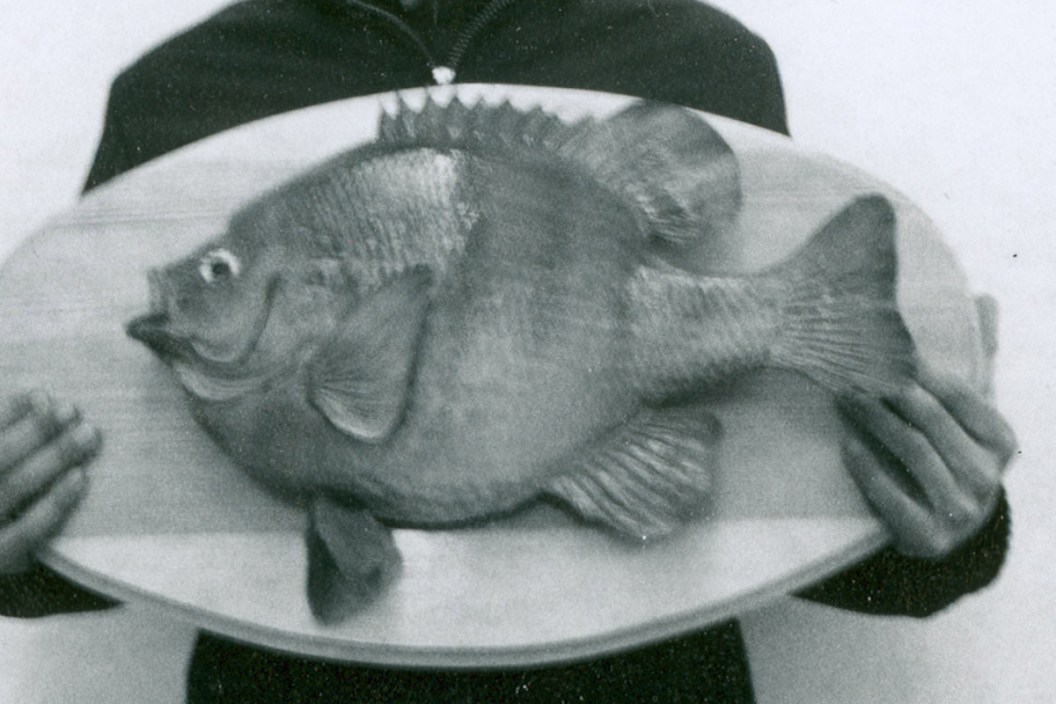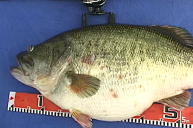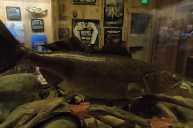There's something special about truly large panfish. Bluegills, crappies, sunfish, it doesn't matter, they just seem to turn heads when they start growing to gargantuan proportions. Which is why we find it odd that one record fish doesn't get talked about too often these days, and that's the world record bluegill. Oddly enough, the same tiny 18-acre lake produced not one, but two world records in the span of only about three years. The second of those fish has stood as the mark to beat ever since, and no one has been able to even come close. So far as we know, there isn't even a photograph of this record-breaker in existence today.
Today, the lake where the fish was caught is entirely private and is no longer legally accessible to anglers. Still, with how popular this fish species is, it's bizarre that no one has come anywhere close to topping the two big bluegills that were caught in Alabama more than 70 years ago. This is the story of the two biggest bluegills ever seen, and why we may never see these world-record fish bounced from the record books.
The First Ketona World Record
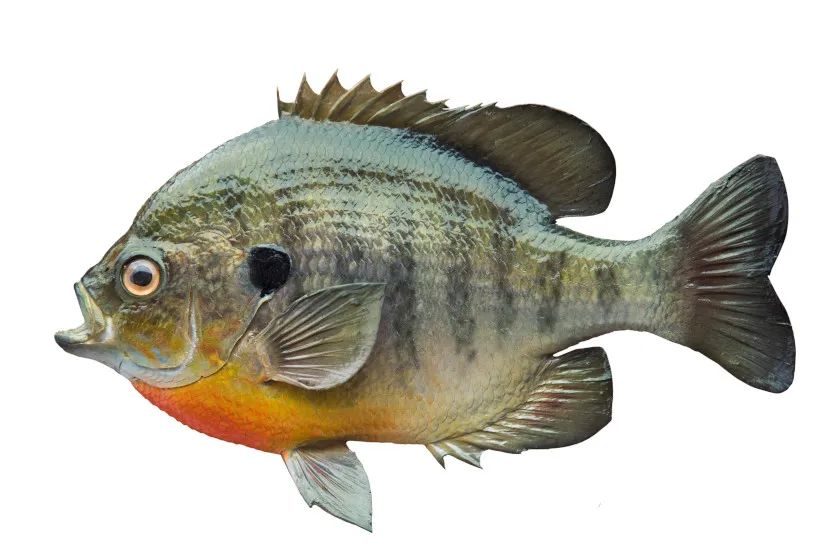
Willard via Getty Images
Prior to 1947, no one had ever caught a bluegill weighing over two pounds, eight ounces. That's still a rather big fish, but it's nothing compared to what Coke McKenzie pulled from Ketona Lake, Alabama. The one-time quarry is now a private pond that allegedly remains off-limits to the public these days. In the early 40s and 50s, the waters were a favorite fishing hole of a man named Coke McKenzie.
In an old interview preserved on Fine Fishing, McKenzie recalled how he would often catch a mess of gills there for dinner. In that interview, McKenzie said the waters of Ketona were extremely clear, and the bluegills would spook rather easily. So, he would use an old cane pole and would rig up a simple weight and quill bobber. Then, he would crawl to the edge of the bank and sneakily drop his bait over the edge to the fish. It proved to be quite effective.
McKenzie and a friend caught around 15 bluegills and it was getting late in the day when he got a strike that was clearly bigger than the other fish they'd caught that day.
"I figured I had a bass," McKenzie said in the interview. "I'd lost bass before. I didn't think I'd land him."
It was around this time that some kids who were gigging frogs wandered past. They showed up as the big bluegill made a dramatic appearance in front of the anglers.
"This monster, the biggest bluegill I'd ever seen, rolled up on his side," McKenzie said. "There was no way to get him up the steep bank."
Improvising, McKenzie borrowed a gig from the two kids and was able to finally land the giant bream. While he knew it was big, he didn't quite realize the significance of what he'd just done right away. McKenzie normally cleaned all his catches right away, but something happened that evening that was both a blessing and a curse at the same time.
"We had company at the house, so I left it in the refrigerator in a pan of water. I planned on cleaning it in the morning, but the company stayed late, and I had to rush to work," McKenzie recalled later. "We got to talking about the fish. The foreman and I got to arguing about its size. Then my boss heard how big it was. So, he sent a man over to the house to get the fish. When the fish was weighed that afternoon, it ran 4-pounds, 10-ounces."
McKenzie's fish was easily large enough to not only be a state record bluegill, but also a world record. The International Game Fish Association (IGFA) did not become the keeper of freshwater fishing records until 1978, so when McKenzie filled out the paperwork, it was to Field & Stream, who kept the records at the time. The magazine quickly made it official that McKenzie's bluegill was the largest the world had ever seen.
There was one bit of bad luck with this story though. Because McKenzie's fish didn't get weighed for close to 24 hours, there is no question it lost weight in that time. It's a scenario that has hurt many a potential record in the past. And this little detail matters, because it comes into play only a few years later.
The Second World Record
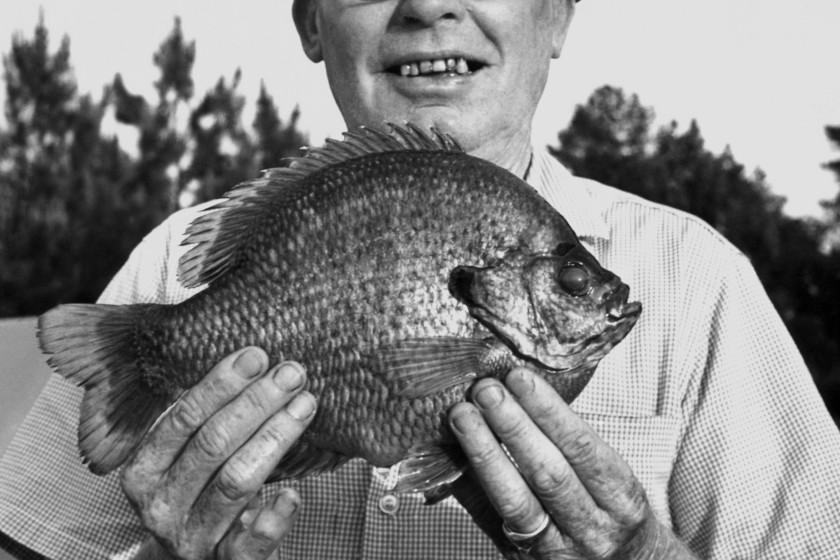
An example of a rare two-pound bluegill. Photo by the IGFA via Getty Images
Unluckily for McKenzie, his record wouldn't last long. Because that wasn't the only mega bluegill swimming the waters of Ketona. Just three years later, on Easter Sunday 1950, an angler named T.S. Hudson headed out to the lake to try his luck. At this point, everyone in the area knew about McKenzie's catch and the giant bluegills lurking in the depths of Ketona. According to Game & Fish magazine, Hudson was using the same cane pole technique pioneered by Hudson when he headed to the lake that day.
We don't know much about what happened next, but we do know Hudson soon caught a monstrous bluegill. Unlike the McKenzie fish, the Hudson bluegill was taken to a set of certified scales immediately. The huge fish weighed 4 pounds, 12 ounces. It was just barely large enough to edge out the McKenzie record for the top spot in the books. The huge bluegill measured 15 inches long and had a staggering 18-inch girth.
The news that his world record had already fallen greatly upset McKenzie, who had instant regrets about leaving his fish in the refrigerator overnight. The angler was thoroughly convinced his fish had been the larger of the two records.
"I should have weighed that fish right away," McKenzie recounted in an interview. "I know it had to weigh at least five pounds. I'm sure it was larger than Hudson's fish that got weighed right away. I saw both fish mounted, and mine was bigger."
Why Anglers are Unlikely to Catch One Bigger
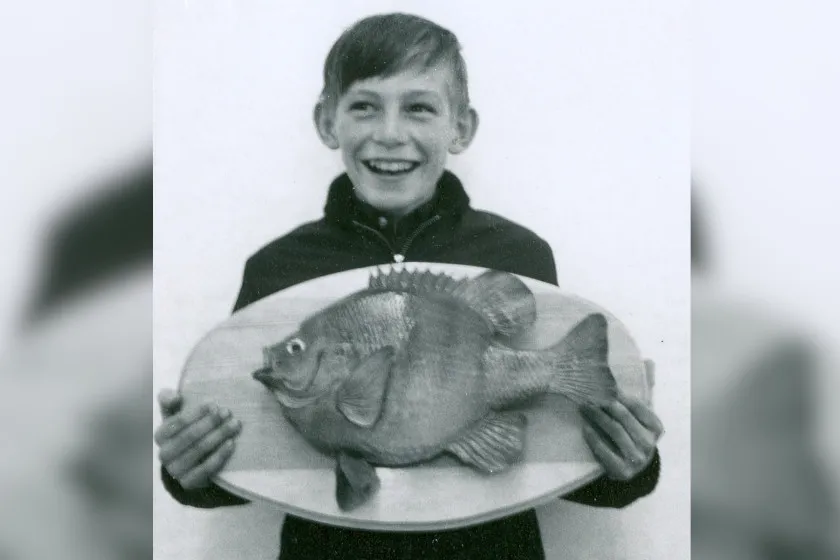
Danny Case's NC state record bluegill. Photo used with permission of the North Carolina Wildlife Resources Commission
While bluegills are found practically everywhere, it takes a special set of circumstances to produce a true giant. According to Game & Fish, biologists studied Ketona Lake in the aftermath of the two big catches and discovered an unusually high amount of nutrients in the water, likely due to the presence of limestone. A lack of spawning sites and a healthy population of largemouth bass also curbed the bluegill population a bit in Ketona. As a result, the fish in the lake were able to avoid stunting and other growth problems present in lakes that are overpopulated with bluegills.
Forage is a huge factor in growing big panfish and Lake Havasu, which sits on the Arizona and California border, is proof of that. In 2007, an invasive species known as quagga mussels were introduced to the 19,000-acre reservoir via the Colorado River. Now, 15 years later, Havasu is growing redear sunfish of gargantuan proportions of three, four, and even five pounds. In 2017, a 16-inch, estimated three-pound bluegill was pulled from the waters there. Biologists have theorized these fish are fattening up on the invasive quagga mussels.
Aside from there being few fisheries with the right conditions to grow giant bluegills, there's also the matter of how often they hybridize with other sunfish species. In places like Lake Havasu, and many private bodies of water, it's not uncommon for hybrid bluegills to be the dominant species in the lake. Thus, including one of these fish hardly seems fair for record-keeping purposes.
However, the biggest reason we may never see Hudson's record broken is the rarity of a four-pound bluegill. Most state records tend to fall in the two-to-three-pound range—at most. It's not a hard rule, but you'll notice most of the larger specimens come from southern waters. Fish like Danny Case's 4-pound, 5-ounce North Carolina state record that was caught in 1967. Case's catch is pictured above and may be one of the few photos of 4+ pound bluegill in existence today. Or Phil Conyers' 4-pound, 3-ounce Kentucky state record, which was caught from a strip mine lake back in 1980. One of the few other four-pounders we found records of was Thomas E. Jones' 4-pound, 8-ounce Virginia state record, which was caught in 1970.
We were only able to find records of five fish, breaking the four-pound barrier. Although there have been some others that were close. For example, Christopher Ray Maples' 3-pound, 15.68-ounce Arizona state record that was caught in 2004, and Michael Holubek's 3-pound, 14-ounce California state record. But it's been a long time since anyone has caught a bluegill confirmed over four pounds. In our minds, that just underscores the difficulty of breaking this record. In truth, the all-tackle bluegill world record might be up there with the smallmouth bass world record in that it may be nearly unbreakable.
According to Game & Fish, biologists later took scale samples from McKenzie's fish that revealed it was nine years old when he caught it. Considering how heavily this species is targeted, it takes a special set of circumstances for any bluegill to survive that long and grow that large. An almost perfect storm if you will. Even in this modern age of conservation and catch and release, we wonder if it's possible to cook up that perfect storm of factors and conditions to produce a fish like that again in the wild. At the very least, we'll have fun trying to break this record!
For more outdoor content from Travis Smola, be sure to follow him on Twitter and Instagram For original videos, check out his Geocaching and Outdoors with Travis YouTube channels.
